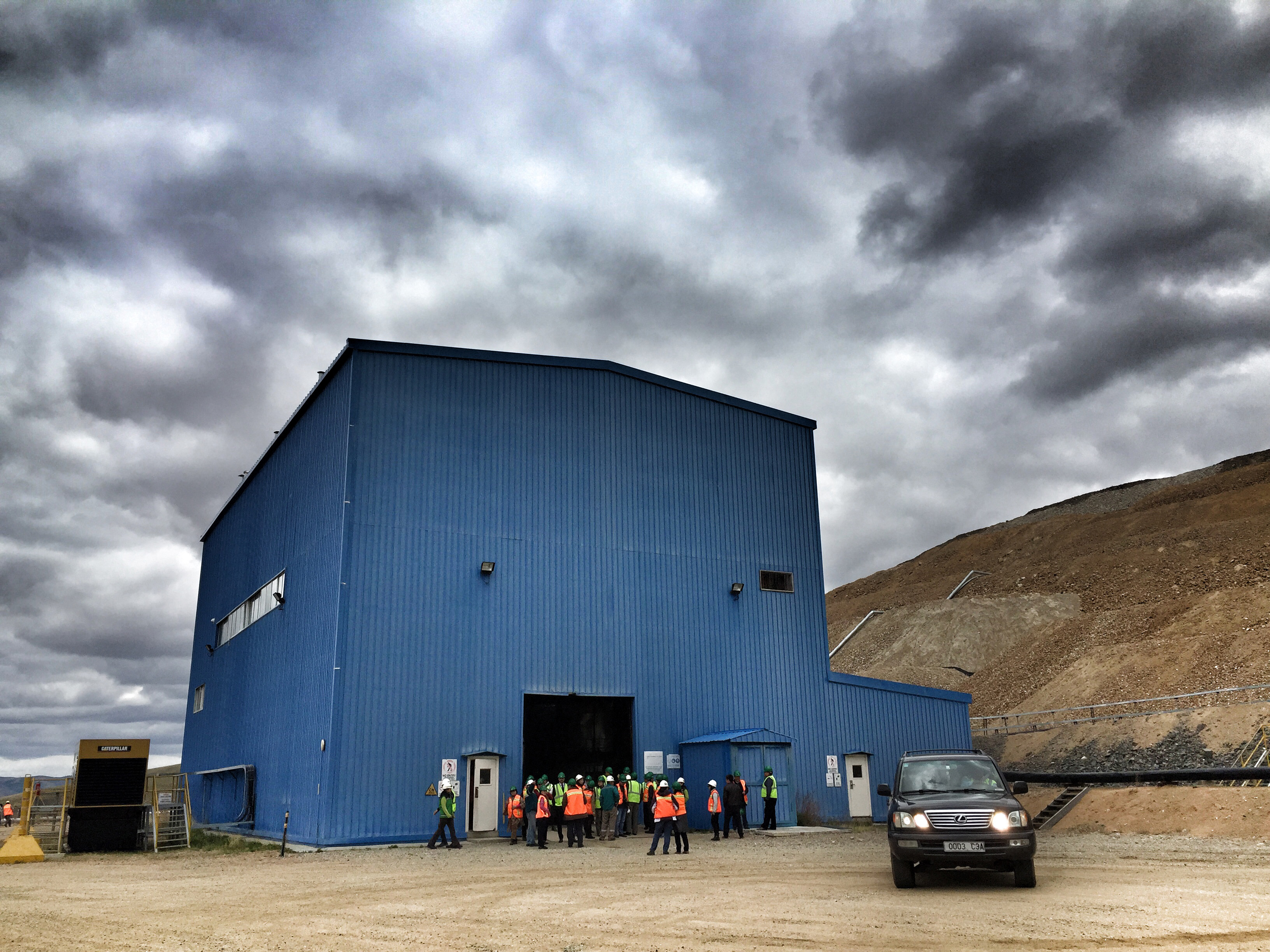Economic and social situation Strong focus on natural resources
Boroo Gold Mine in Mongolia
The country is especially dependent on its neighbour China, which accounts for over 80 per cent of Mongolia’s exports. The consequences of this were thrown into sharp relief by the COVID-19 pandemic. Not only did China’s rigorous containment policy bring down demand for Mongolian resources; it also had a negative effect on trade flows across the joint border and resulted in temporary shutdowns of companies in Mongolia.
The Mongolian government responded with an economic stimulus programme. The aim is to increase political and economic stability, improve the business environment, make exports easier – for example by expanding transport infrastructure – attract investors and generate more job opportunities. The programme comprises around 100 projects in which the government and private companies are expected to invest over 35 billion US dollars.
Social policy measures such as raising the minimum wage and increasing salaries in the public sector are also intended to boost the population’s buying power.
Economic development
Mongolia’s economy has recovered following the economic slump (minus 4.6 per cent) caused by the COVID-19 pandemic. In 2023, gross domestic product (GDP) rose by 7.2 per cent. A growth rate of 5.3 per cent is expected for 2024.
There is huge economic potential in the mining sector, as thus far only a fraction of the country has been explored for possible mining sites. Demand for mined metals is also increasing significantly, as these are urgently needed for the global energy transition and the move to electromobility. The expansion of a copper mine in the Gobi Desert could make Mongolia one of the world’s top five copper producers. Mongolia is currently also preparing to start mining lithium and rare earths.
The German-Mongolian Institute for Resources and Technology (GMIT), which receives German funding, trains specialists and managers and generates technological and scientific knowledge for Mongolia’s raw materials economy. Graduates from the Institute go on to work in important sectors in the raw materials industry and thus contribute to the country’s economic growth. The BMZ financed the construction of a building housing laboratory and teaching facilities which has improved opportunities for teaching and research that contribute to value chain development in the mining sector. The underlying aim is to increase Mongolia’s financial independence.
Reducing dependence, creating jobs
To reduce Mongolia’s dependence on commodity exports, the government wants to diversify the economy and enhance manufacturing in particular. The aim is to process the raw materials gained through mining and agriculture within the country and to meet local demand by increasing in-country production. This applies in particular to food production, but also to fuel production and the processing of cashmere wool in the clothing industry. Jobs in the tourism sector will also be boosted.
Major bureaucratic hurdles, a lack of legal certainty and widespread corruption are restricting growth, however.
Poverty and environmental degradation lead to rural exodus
Since 1990, the statistical per capita income has more or less tripled. Yet the gap between rich and poor has widened. Almost 30 per cent of the Mongolian population still lives below the national poverty line.
About one quarter of the employed population works in agriculture, chiefly in livestock farming. Conditions are difficult: Mongolia has an extreme climate, with low levels of precipitation and large variations in temperature.
The consequences of climate change are exacerbating the environmental damage caused by human activity such as mining and agriculture. Increasing demand for cashmere wool and meat has resulted in the unchecked growth of livestock herds and serious overgrazing. According to the authorities, soil degradation or desertification are already affecting roughly three quarters of the land surface to varying degrees.
Many rural inhabitants move to the capital of the country, Ulan Bator, in search of income opportunities. Almost 50 per cent of Mongolians now live in the capital city. However, its labour market is struggling to absorb any more newcomers. Many migrants are living in yurt settlements on the outskirts of the city and can often only find poorly paid work.
As at: 05/02/2025
